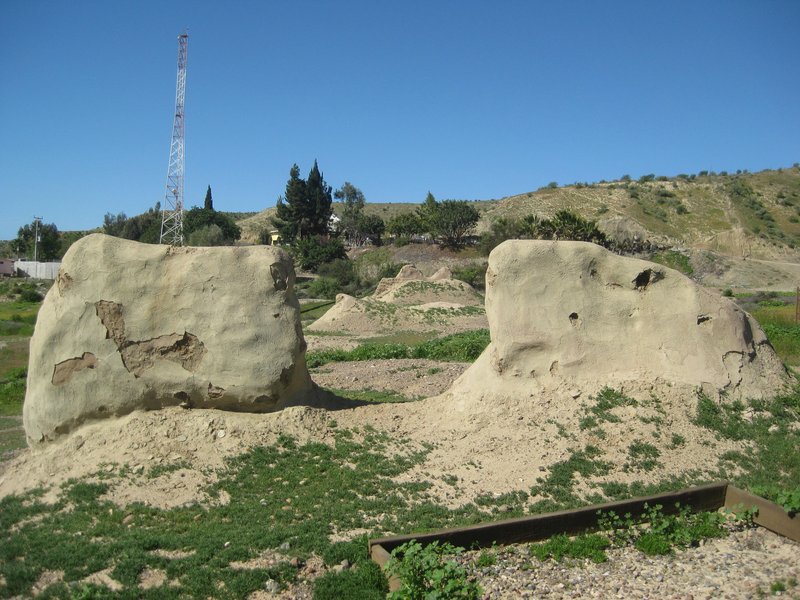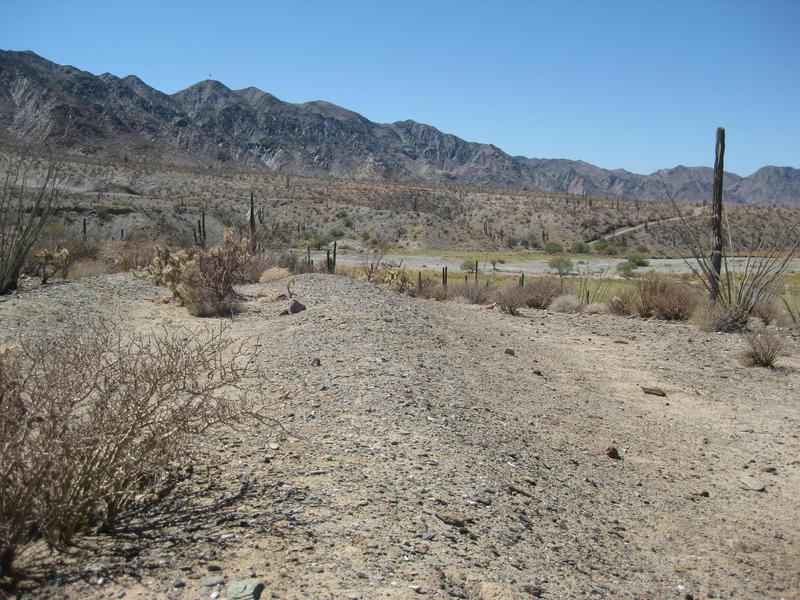
David K - 8-13-2020 at 08:29 AM
The following is from my Facebook Baja Missions Group page: https://www.facebook.com/groups/bajamissions/
Categories of missions in Baja California goes something like this:
1) Original mission period church construction.
2) Ruins protected to preserve the site.
3) Ruins (standing walls) without any preservation.
4) Mission site with only rubble or foundation outlines.
5) Modern church built on a mission site.
6) No remains of original church construction.
Nearly half the missions moved after they were founded with only a few that have remains at the other locations to see.
One mission location has extensive modern construction added to the older church: Todos Santos (Pilar de la Paz 1825-1840 site).
One mission was demolished except for a side-chapel which was preserved: San José de Comondú.
Let's list some of the missions per category:
6) No remains of original church construction: Pilar de la Paz (1720-1748 site); San Juan Bautista de Ligüí/ Malibat (1705-1721
site); La Purísima.
5) Modern church built on a mission site: Santiago (1736-1795 site); San José del Cabo (1753-1840 site); Santa Rosa de las Palmas
(1733-1748 site) and Pilar de la Paz (1748-1825 site). Pilar de la Paz/ Todos Santos (1825-1840 site). [The modern church in La Paz is often mentioned
as the original 1720-1748 mission site. However, the mission was several blocks away, to the south. The exact spot is unknown.]
4) Mission site with only rubble or foundation outlines: Los Dolores Chillá (La Pasión); Calamajué; San Pedro Mártir; Santa
Catalina.
3) Ruins (standing walls) without any preservation: Comondú Viejo; Guadalupe; Los Dolores Apaté; Santa María; San Fernando; Santo
Tomás.
2) Ruins protected to preserve the site: El Rosario (both sites); Santo Domingo; San Vicente; San Miguel; El Descanso.
1) Original mission period church construction: Loreto*; San Javier; Mulegé; Comondú; San Ignacio; San Luis Gonzaga; Santa
Gertrudis; San Borja.
*roof and bell tower replaced in 1955
Samples of the six categories...
1) Original mission period church construction.

San Javier
2) Ruins protected to preserve the site.

El Rosario (de Arriba)
3) Ruins (standing walls) without any preservation.

San Fernando
4) Mission site with only rubble or foundation outlines.

Calamajué
5) Modern church built on a mission site.

Santiago
6) No remains of original church construction.

Ligüí
[Edited on 8-13-2020 by David K]
Construction years
David K - 8-13-2020 at 12:23 PM
While not a complete set of dates, the years that the mission churches were built is often enlightening.
A mission begins simply as a place where an altar is made, perhaps under a palapa or stick structure. This would be the founding date of a mission.
The next phase of construction is usually an adobe room with a thatched roof. Some mission churches never advanced beyond this step.
The final stage for the most successful missions would be to have a cut-stone church, made from local sources with the skill of masons and neophyte
labor.
Most of the cut-stone or rock-built mission churches have survived and are intact today. Ones that have not include the two sites for Los Dolores, the
huge church at Comondú, demolished in 1936 except for a small side-chapel that is called the mission today. San José del Cabo was in ruins and was
demolished sometime after 1919.
Founding year, Mission name......... stone construction years:
1697 Loreto.............................. 1740-1750
1699 San Javier......................... 1744-1758
1705 Mulegé............................. 1757-1766
1708 Comondú.......................... 1754-1760
1720 Guadalupe........................ 1750s
1728 San Ignacio...................... 1761-1767 and 1779-1786
1737 San Luis Gonzaga.............. 1753-1758
1752 Santa Gertrudis................. ? -1796
1762 San Borja......................... ? -1801
Dominican published records (1773-1855) are lacking or have yet to be discovered.






